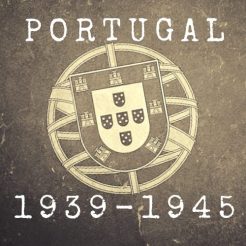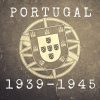
Information about the sinking of the Hellenic Trader in the Admiralty War Diaries
(National Archives and Records Adninsitration, USA)
Nacala
(Portugal)
Captain:
Type: Thug Boat
Tonnage: 2072 gt
Owner: Companhia Nacional de Navegação
Homeport: Lisbon
Construção: England (1886)
On the morning of June 12, 1942, the tugboat Nacala was returning to Mozambique towing whaleboats with shipwrecked of the British freighter Mahronda, when the crew spotted other lifeboats in the distance. They were the survivors of the Panamanian ship Hellenic Trader, sunk – like the English vessel – the day before by the Japanese submarine I-20.
After the tug left the Mahronda's men on port, he immediately returned to the island of Goa to collect the 36 survivors of the Panamanian who came in a boat and a raft. They later discovered that the chief engineer Athineos, who had been seriously wounded in the legs by the attack, was already dead. He was buried in the cemetery of Mossuril. Three men, including Captain Metaxas, were admitted to the hospital. Six men disappeared with the ship.
Between the castaways of the Panamanian and British ships, around 200 persons arrived at Mossuril and Lumbo that day. Due to the lack of accommodation thy were lodged by the companies Ferreira dos Santos, Zuid and Hotel Lumbo. Some were also billeted by British residents of the area. The Portuguese authorities also lent 45 mattresses to the British vice consul to facilitate overnight stays. These mattresses were part of a batch of two hundred ordered for the July 1939 visit of the Portuguese President of the Republic, Óscar Carmona.
The Hellenic Trader was heading south when, at 5:50 pm on the 11th of June, a few miles from the Maxilone Point, it was attacked by the I-20 submarine of the Imperial Japanese Navy. The Panamanians witnessed the torpedoing of the Mahronda and, shortly afterwards, were surprised by the Japanese vessel that attacked them with cannon fire. The first five shots were short, but the next rapidly ignited and sank the freighter. 36 of the 43 crew escaped in a rescue boat and a raft and, being close to land, Captain Metaxas ordered them to go to Mozambique where they were sighted by the Nacala who had left to assist the crew from the Mahronda.
On land, the Greek and British commanders talked about the attacks and about a suspicious ship that followed them during the day, without ever being targeted by the submarine. Commander Metaxas assured that he saw the gunners of that vessel heading towards one of the cannons, before they diverged without firing or providing assistance.
Already in the lifeboat, he was surprised by the reaction of a white man who was in a small boat close to land and who, despite requests for help in several languages, did not give any assistance, showing by gestures that he had no intention of helping them. It was possibly one of the many German settlers who lived in the area.
C. G.
Hellenic Trader
(Panama)
Captain: Metaxas
Type:Merchant Steamer
Tonnage: 2009 gt
Owner: China Hellenic Line, Ltd
Homeport:
Built: Newport News Shipbuilding & Drydock Co.
Sources:
National Archives UK, Kew (GB) § Arquivo Histórico da Marinha (PT) § Arquivo Histórico do MNE (PT) § Lista dos Navios da Marinha Portuguesa, datas 1939 a 1945 § The Worlds Merchant Fleets - 1939, Roger Jordan, § NARA

